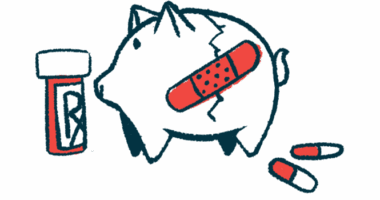Taking a Break From Caregiving to Visit Family

After almost three years of not seeing my family, I’m finally back in Malaysia to spend some quality time with my father, siblings, and children. More important, I can receive closure after my mother’s passing last May.
I’m challenged by the fact that she wasn’t here to hug me upon my arrival. I miss the sound of her laughter and the conversations we’d have. I’ll no longer enjoy a selection of my favorite dishes, which she’d always make for me when we were together. This vacuum she’s left will never be filled again, and I’ll carry this void with me for the rest of my life.
But as I look around at the present members of my family, I’m encouraged to see that they have adapted to Mom not being around. They clearly miss her, yet my sister and my brother push through their grief while holding on to our mother’s legacy. I’m so proud of them. I can see that my dad especially misses her, but even in his despair, he has not allowed the loss of his wife to render him empty.
After spending some time with them, I’ve learned that the loss of a loved one can scar us. It’s like a laceration that cuts deep. The wound bleeds for a while and is jarring to the senses. Our world turns topsy-turvy, as it did for my family in Malaysia for months after my mother died.
I’ve been spared this experience due to pandemic-related national border closures, and for a while I was prevented from traveling to Malaysia from my home in New Zealand. Being here now, I can only imagine what they all went through. That wound is now a well-healed scar. It’s there, but the hurt has lessened.
I’m also reflecting on my life as a caregiver to my husband, Aubrey, who has hereditary ATTR amyloidosis. Will I be able to find a new normal should I lose him? What would our children’s and my life look like without him? At this point, I can only anticipate potential scenarios. We do what we can to practically prepare, but I don’t think any of us can fully equip ourselves for his passing.
Being apart from Aubrey during this trip has undoubtedly increased my concern for him, as I’m not there to support and help him. I’m reassured by the fact that he has our daughters and son to call on if he needs extra aid, so I’m trying to focus on the here and now. I want to be refreshed and recharged by my time in Malaysia. Soon I will be back in New Zealand with Aubrey feeling better and stronger. This is good for my personal well-being.
If you are a caregiver contemplating taking a short break from your loved one, my advice is as follows:
- Find someone who can step in to help manage care while you are apart. Family, friends, or even a hired aide from a respite agency can offer peace of mind. One of our daughters lives close by, and I know she is happy to stay over while I’m gone.
- Reach out and ask friends to check in on your ailing loved one. I’ve asked people in my circle I can rely on to help Aubrey should he need assistance.
At the end of the day, there will be times when a caregiver and a patient are apart from each other. As caregivers, we may feel guilty about leaving, even if it’s only for a short time. But it’s also all right to depend on others when this happens.
I’m fortunate that Aubrey understands why I have to be with my family and why his illness prevents him from coming along. So I’ll embrace this time with my loved ones, knowing that every moment is a gift that I should not take for granted.
Note: FAP News Today is strictly a news and information website about the disease. It does not provide medical advice, diagnosis, or treatment. This content is not intended to be a substitute for professional medical advice, diagnosis, or treatment. Always seek the advice of your physician or other qualified health provider with any questions you may have regarding a medical condition. Never disregard professional medical advice or delay in seeking it because of something you have read on this website. The opinions expressed in this column are not those of FAP News Today or its parent company, Bionews, and are intended to spark discussion about issues pertaining to familial amyloid polyneuropathy.








Leave a comment
Fill in the required fields to post. Your email address will not be published.